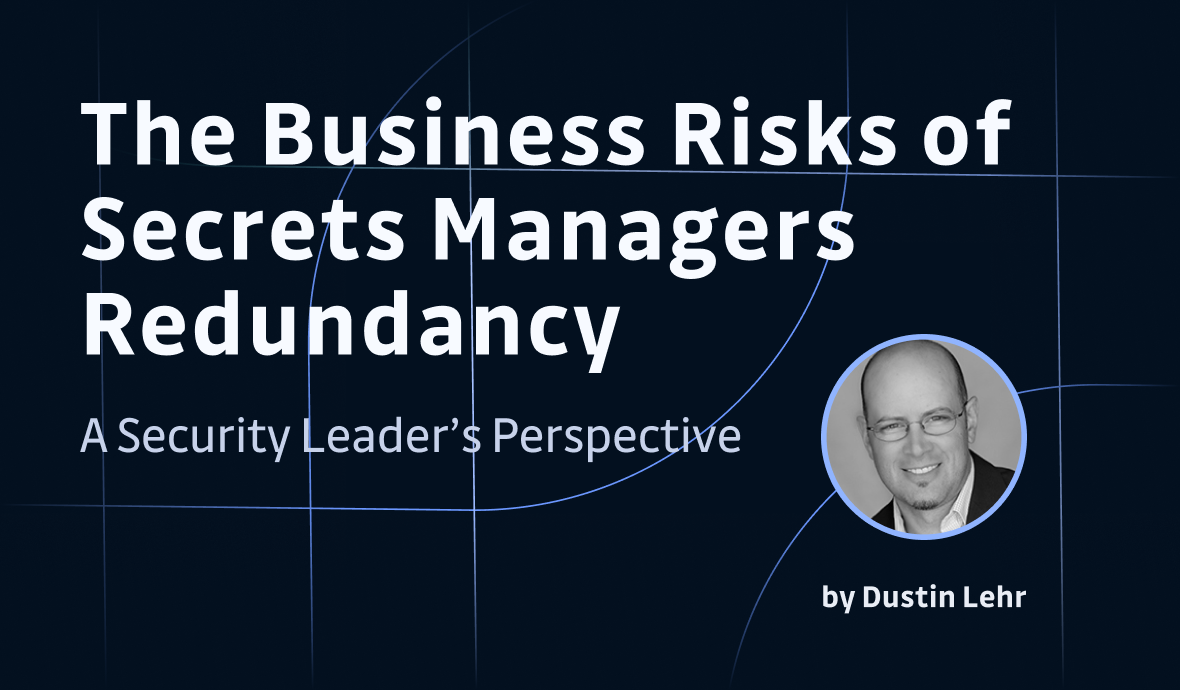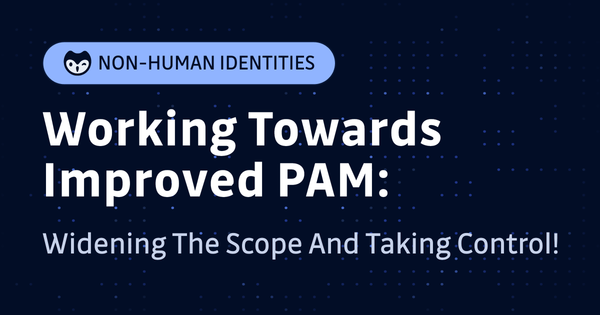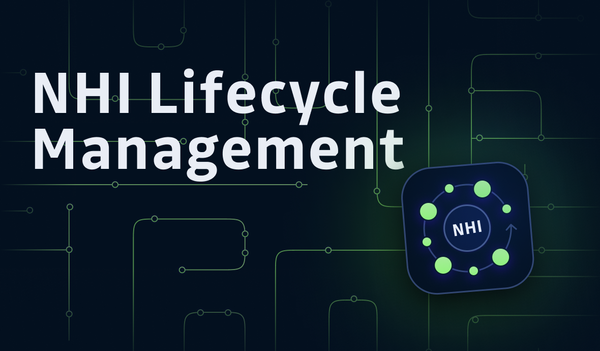Secrets… those sensitive credentials, API keys, and tokens that silently power our infrastructure, are foundational to software delivery, automation, and security. As environments grow more complex and automated, managing these secrets is no longer a niche security concern–it’s a business imperative.
Secrets management has become one of the most critical pillars of security, reliability, and operational integrity. Secrets, from API keys to database passwords to authentication tokens, enable everything from Continuous Integration / Continuous Delivery (CI/CD) pipelines to microservices communication. With the rise of automation, containerization, and distributed systems, these secrets drive not only human access, but also the actions of what are now best known as “non-human identities” (NHIs).
Yet, as organizations scale, merge, and decentralize, a new problem has emerged: secrets managers sprawl. Many enterprises today don’t have a single vault or standardized secrets strategy. Instead, they find themselves managing many multiple, disparate secrets managers, often born out of different teams choosing different tools, inherited legacy platforms, or overlapping tech stacks after acquisitions. While this may seem like a harmless side effect of decentralization or developer autonomy, the truth is more concerning. While focusing our efforts to address it elsewhere, redundancy in secrets management introduces risk… as well as operational complexity, ultimately undermining overall security maturity.
To fully understand the business impact, we must consider both the technical implications and the human realities. Cybersecurity leaders must bridge these two perspectives to craft sustainable, unified strategies that reduce risk while increasing organizational agility.
Redundancy and Complexity: The Hidden Cost of Too Many Vaults
From a technical standpoint, managing multiple secrets managers quickly becomes an exercise in complexity. Each vault has its own way of handling policy enforcement, key rotation, expiration rules, and integrations with developer workflows. As these systems proliferate, the ability to enforce organization-wide best practices becomes fragmented as you can no longer effectively audit usage or consistently rotate secrets.
This fragmentation also increases the chance of security gaps. Secrets may remain active in an unused or deprecated vault, their risk profile forgotten as attention shifts to newer systems. Over-permissioned NHIs may persist in one system even after decommissioning in another. These are not just theoretical risks—they are common in the real world, especially during transitions like cloud migrations and platform upgrades.
Operationally, each additional secrets manager introduces duplicate work. Teams must maintain separate documentation, train staff on different tooling, and manage multiple integrations with infrastructure and codebases. All of this slows down delivery, drains resources, and stretches already thin security teams even further.
Mergers and Acquisitions: Where Secrets Fragmentation Multiplies
One of the most telling examples of secrets sprawl emerges during M&A activity. Each company entering the merger has its own vaults, policies, and access practices. Rarely is secrets management prioritized during early integration efforts. Instead, teams often resort to manual reconciliation, leaving gaps and inconsistencies.
In these high-change environments, security gaps multiply. Credentials may be overlooked, poorly classified, or left valid in legacy systems without proper decommissioning. These gaps present an attractive target for attackers and a hidden liability for security teams.
Operational delays are another cost. Without a unified migration path, secrets become a point of friction. Integration timelines are extended, teams must work around tooling differences, and leadership becomes frustrated with the pace of technical unification. For organizations seeking post-merger efficiency, fragmented secrets management becomes an invisible yet impactful drag on momentum.
Governance, Identity, and the Human Element
The technical risks of redundant secrets managers are only half the story. The other half involves people, process, and accountability. One of the most common challenges during vault transitions or consolidation is the lack of clear ownership. Security teams may assume their Site Reliability Engineering (SRE) or DevOps teams own secrets rotation. Identity and Access Management (IAM) teams may believe their job ends at identity provisioning, with dev teams left with vault access granted long ago, with no memory of who created which secrets, and for what purpose.
This ambiguity is especially dangerous when dealing with NHIs. Unlike human users, NHIs often operate in the background through isolated CI/CD jobs, serverless functions, and ephemeral services, and they are frequently granted excessive permissions in order to "make it work." Because they lack a human owner, these credentials are rarely rotated or decommissioned. And because secrets management is split across tools, there’s no single inventory showing which identities access which systems, with what level of privilege.
Effective secrets governance requires centralizing identity and permission data and associating it with infrastructure and application assets. Leaders must ask: Who owns each secret? Which service uses it? What permissions does it grant? When was it last rotated? Without answers to these questions, you’re operating with blind spots.
Unfortunately, many organizations try to answer these questions ad hoc, with spreadsheets created to satisfy a one-time compliance audit request. But real resilience comes from investing in a living inventory, built into a security “data lake” / data warehouse, or centralized platform, continuously and automatically fed from upstream “source of truth” systems. This shouldn’t just be about passing audits; it’s about enabling fast, confident decision-making, using accurate data, in high-pressure environments.
Toward a Unified Strategy: Recommendations for Cybersecurity Leaders
Cybersecurity leadership sits at the intersection of risk reduction, operational effectiveness, and business enablement. Addressing secrets managers redundancy isn’t simply a matter of tool consolidation. It’s about creating a sustainable, scalable governance model for identity and access across the enterprise.
- It begins by establishing a single source of truth. Whether through standardization on a single vaulting technology or a federated architecture with consistent APIs and policy enforcement, the goal is to make secrets management seamless, predictable, and auditable.
- Next, build and maintain a real-time inventory of secrets, identities, and the assets they access. This includes human and non-human identities alike, and it must be tied into your IAM systems, cloud infrastructure, and application layers.
- Clarify ownership across teams. Security, SRE, IAM, DevOps, and platform engineering must collaborate, with clearly defined responsibilities for secrets creation, rotation, and retirement. This is not just a policy decision, it’s a cultural one.
- Finally, use automation to reduce toil and eliminate human error. Secrets should be rotated automatically, flagged when unused, and retired when the infrastructure is decommissioned. Developer experience matters here: secure workflows should be the easiest path, not the most cumbersome one.
Conclusion: From Technical Debt to Strategic Advantage
Redundant secrets managers might feel like a minor inconvenience, but in practice, they represent a form of technical debt that compounds over time - increasing your risk, delaying your operations, and fragmenting your security posture.
Cybersecurity leaders have the opportunity to turn this liability into a strategic advantage. By unifying secrets governance, aligning identity with infrastructure, and building cross-functional accountability, they can reduce complexity and improve resilience.
Secrets management is no longer just a technical implementation detail. It’s a core enabler of identity, automation, and business continuity in the modern enterprise.










